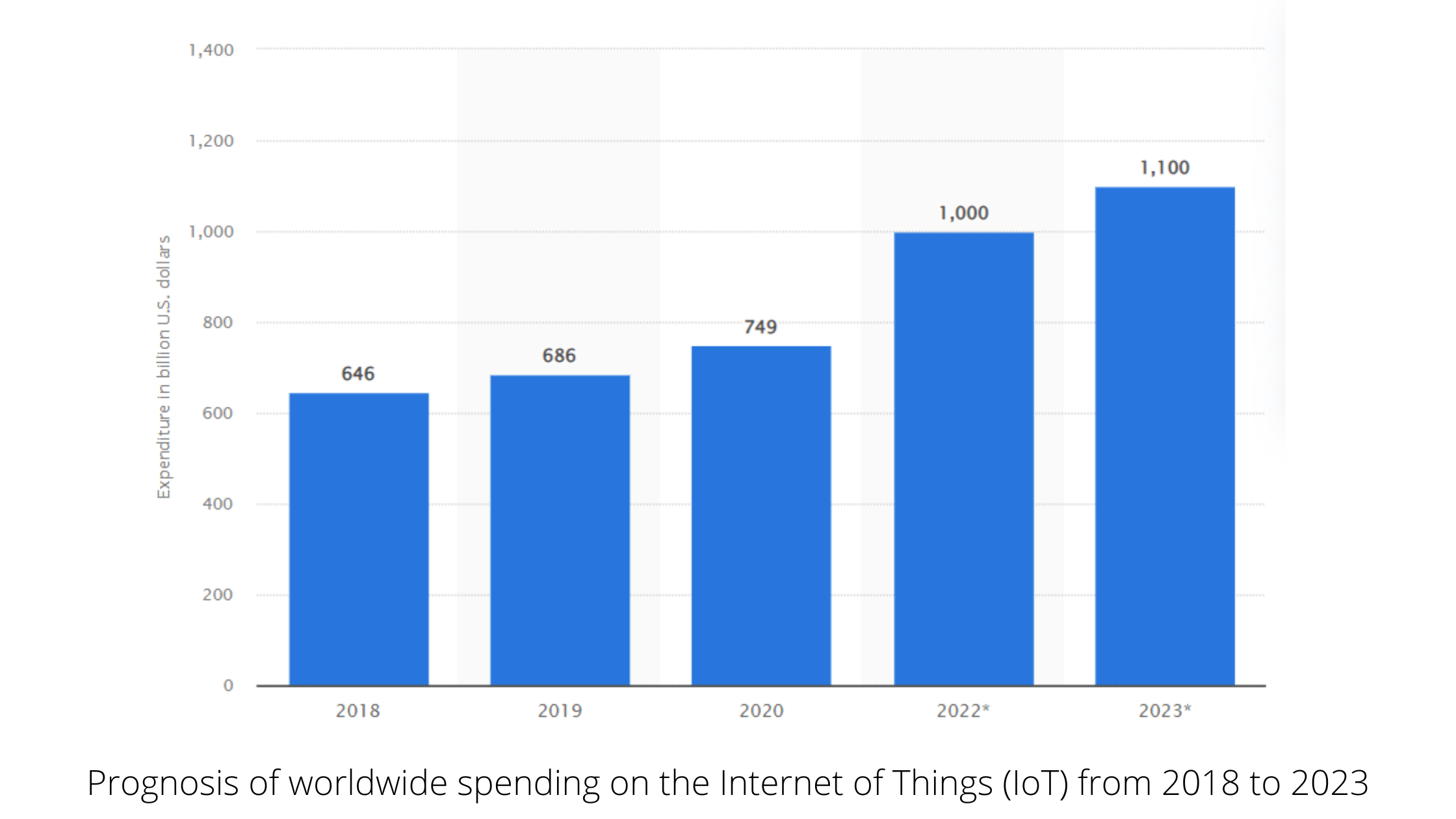How to develop an Internet of Things (IoT) application?

If we told you 30 years ago that we could have devices across the world all connected to each other, working and interacting together, what would you say?
IoT has surpassed everyone’s expectations of how much it could change the technological landscape across the world. IoT applications have overhauled almost all major industries including healthcare, automobiles, home appliances, and manufacturing.
Businesses everywhere are now incorporating IoT into their strategies. If your business is one of them, chances are that you need an IoT application to integrate and simplify your processes.
What to expect: In this article, we explain the need for IoT applications, as well as how you can develop one for your business. It will cover all the prerequisites to know before you start developing the application, and will also help you choose the right way to go about the development.
What is IoT app development?
IoT app development refers to creating software applications that leverage the Internet of Things (IoT) technology to enhance functionality and user experience for IoT devices. These apps can connect with devices through sensors and internet connectivity to offer features such as remote monitoring, battery status updates, and even predictive maintenance alerts. By developing IoT apps, we can improve the efficiency, convenience, and sustainability of device usage, ultimately benefiting both manufacturers and users.
Why develop an IoT application
During the worst pandemic in a century, IoT spending grew manifolds. The trend seems to be continuing well into the future. The following graph shows the projected spending on IoT in the coming years.
You do not want to hop on to this technological behemoth without doing your due diligence. If you are planning to develop an app (or getting it developed by a tech partner), you need to make sure that it is tailored to your requirements. A ready-made solution may seem convenient in the short run, but an IoT application is a considerable investment for the long run in terms of both time and money. So you need to consider the overall returns on your investment.

An IoT app can help you monitor your business, improve efficiency and make better decisions based on device data that it collects and analyzes. We have compiled the importance and applications of an IoT app in detail here.
How to develop an IoT application in 5 steps
Now that you have all the prerequisites in place, let’s take another look at the IoT architecture and see what needs to be done for each of the layers:

Step 1: Define the requirements for the application
An important step in developing an IoT application is to define the goal and scope of your app. This entails you getting to the bare bones of your objective. Decide what you want to achieve once the app is live. The goals may include:
- Tracking movement or location in real-time, allowing users to see where their devices are throughout the day (e.g., EVs owned by a delivery chain)
- Monitoring temperature or humidity levels, which could help you manage heating/cooling systems (e.g., hospitals)
- Using sensors to detect harmful gases such as carbon monoxide, methane, and hydrogen sulfide at industrial plants (e.g., refineries)
The scope of your application will include the features that you require. This could include:
- Device Management
- Dashboarding
- Device to Mobile Communication
- Remote Shell
- Over-the-air updates
- Device Shadow
- Metadata management
- Data visualization
When you define the requirements of your IoT application, you will be able to develop an app that will speed up your processes and bring down your costs.
Step 2: Choosing the right hardware
The type of hardware depends on your project requirements. It could be sensors, GPS trackers, or even wearables. But it is important to pick devices that are reliable and relevant to your project.
Take a look at the sensors that are available. If you are developing smartwatches, for example, you will need oxymeters, pedometers, and pulse monitors. But if you are developing smart vehicles, you will need different sensors like GPS or altitude monitors.
Depending on whether your device is consumer-based, industrial, or automobile-focused, you will have to find sensors that are appropriate. Industrial and automotive sensors need to be far more reliable than those on consumer devices, as they undertake more sensitive tasks.
Once you have settled on the sensors, you also need to look at the larger hardware architecture and figure out if you need microcontrollers or microprocessors on the device to process the data.
These details may seem overwhelming, but it is important to get them right as changing your hardware down the road is going to be time-consuming and expensive.
Step 3: Find the right connectivity protocols
There are several network protocols that you can use like WiFi, 2G, 5G, Bluetooth, LoRa, NB-IoT, or Zigbee. Depending on your devices and the availability of resources, you need to pick the right channels for connectivity.
If your devices are usually used in a home or office environment, for example, you can use WiFi for data transmission. Whereas if your devices are going to be in motion or in remote locations, you may want to pick GSM. Similarly, a companion device such as a smartwatch could use Bluetooth.
As with hardware, it is unlikely that you will be able to change this decision down the road, so it is important to pick the right protocol for the use cases you have in mind. This will also affect your cost structures. Adding GSM connectivity will mean you will have to incur cellular data charges whereas with WiFi & Bluetooth these concerns don’t exist.
Step 4: Ensure the firmware is well-equipped
Firmware, or device-side software, are the technical terms for the program that runs your hardware. It is essential to ensure that your firmware is well equipped, or else you could experience data loss, and end up spending a lot more on data storage and transmission than necessary. Ensure that your firmware has the following capabilities:
Retries for pushing data on network disconnections so that connectivity issues do not lead to data loss.
Disk persistence in the absence of network for long periods of time. This is absolutely necessary if your devices are going to be mobile or remotely located.
Batching & compression to save data costs. Data costs can pile up over time and drastically bring down your ROI.
Data encryption using TLS allows you to ensure data security for sensitive data.
Reliable downloads of over-the-air update images will ensure frequent updates that improve efficiency and device performance over time.
Step 5: Pick the right cloud platform
The right IoT platform will hand you the necessary tools to create an application that serves your purpose. In order to choose an IoT platform that works for you, you need to look for the following:
- Uptime
- Data security
- Debugging
- Feature stability
- Security
- Migration capabilities
- Connectivity, and
- Scalability
We have created an in-depth guide on how to choose the right IoT platform, that you can take a look at here.
Critical addition: Secure your app
IoT security is massively important. IoT is a comparatively new and dynamic technology, which means that there are constant changes in the process. Due to this, the security protocols for most IoT projects are not defined. Also, each device in your project can be a security issue, if not secured appropriately.
Your IoT application is the melting pot of all the data that your devices collect. It can be used to redirect your devices or even snoop on your customers. Therefore, proper security is of utmost importance. When developing your app, make sure that you put security protocols in place, ensure encryption for all the data being stored and transferred, and employ appropriate access control.
Final Thoughts
Hopefully, this post has given you some ideas on how to develop your own IoT application. Of course, there will be challenges in IoT development, but the process can provide insights into how your business operates and how it could improve.
The first step to developing an IoT application is to start with a good idea—the most important thing is that it is simple. The next step would be finding a team or group of people who can be part of your new project or organization. With these things in place, alongside a strong plan, your IoT application will turn out to be as expected.
Frequently asked questions
How much does it cost to develop an IoT application?
IoT application costs are dynamic depending on features, security, and other factors. However, the typical range is between USD 20-60K, if you choose to develop the application entirely from scratch. A good way to bring your costs down is to choose an IoT platform that can speed up this process while also lowering costs.
How long does it take to build an app from scratch?
The typical development of an IoT application can take up to 12-24 months. This duration can go up further if the processes are not streamlined or the right tools aren’t used. However, you can bring down the time considerably by employing a good IoT platform.
What are 5 examples of IoT applications?
IoT applications are everywhere around us. Some great examples of IoT applications are:
- Google Nest
- MyFitnessPal
- Apple Watch app
- Fasal (Agricultural IoT)
- Ring: Home Security Systems
How do I make my own IoT app?
To develop an IoT application, you need to define the objective of the app itself. Then you can go about it in this way:
- Choose the right devices/ hardware
- Figure out the appropriate connectivity protocol
- Develop the right firmware
- Pick a cloud platform that fits your requirements
- Build the application on the platform
- Secure your application.
This is just a brief overview of what goes into the development of an IoT app.


.png)
